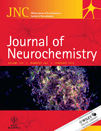Journal list menu
Export Citations
Download PDFs
REVIEW ARTICLES
Morphological plasticity of rodent astroglia
- Pages: 263-275
- First Published: 26 December 2012
Nerve growth factor-mediated regulation of pain signalling and proposed new intervention strategies in clinical pain management
- Pages: 276-289
- First Published: 15 November 2012
ORIGINAL ARTICLES
Signal Transduction & Synaptic Transmission
RCAN1 regulates vesicle recycling and quantal release kinetics via effects on calcineurin activity
- Pages: 290-299
- First Published: 08 November 2012
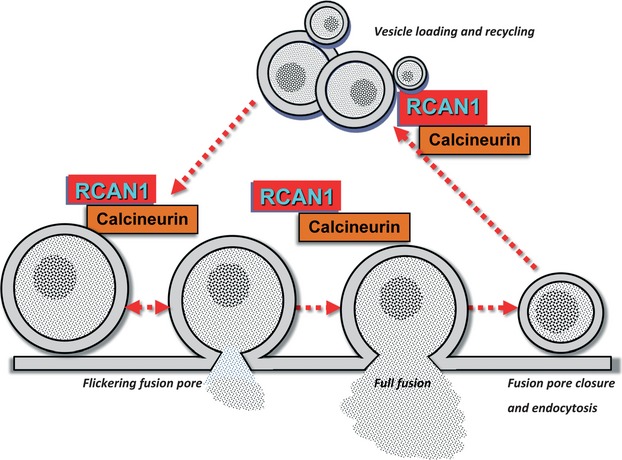
We wished to understand more about how Regulator of calcineurin 1 (RCAN1) controls cell communication. We find that RCAN1 overexpression reduces vesicle recycling, vesicle filling, early fusion pore stability and quantal release during exocytosis via the inhibition of calcineurin. These findings provide further insight into the function of a protein that is overexpressed in both Down syndrome and Alzheimer's disease.
Cell-specific effects on surface α7 nicotinic receptor expression revealed by over-expression and knockdown of rat RIC3 protein
- Pages: 300-309
- First Published: 15 November 2012
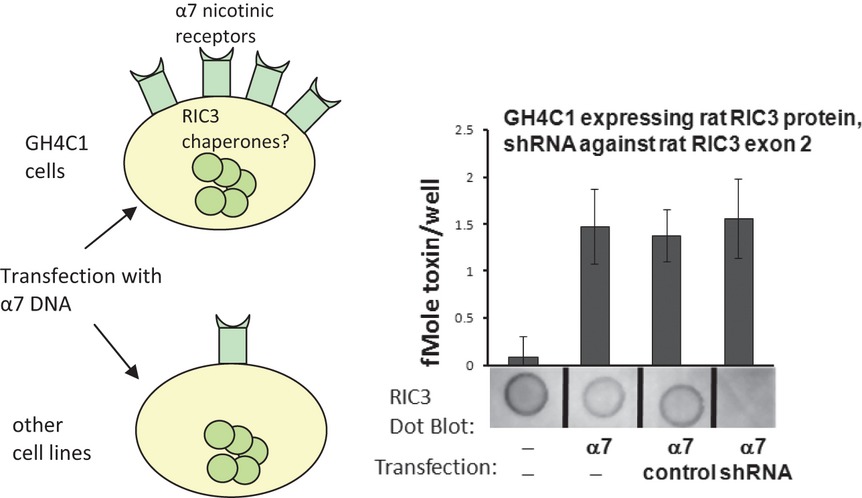
The chaperone that didn't: We examined whether rat GH4C1 cells have more of the chaperone RIC3 to explain why these cells more readily express surface α7 nicotinic receptors than other cell lines when transfected with α7 DNA. However, RIC3 protein knockdown had no effect on GH4C1 α7 expression. These cells possibly have additional chaperones for this important receptor subtype.
Brain Development & Cell Differentiation
The cellular form of the prion protein is involved in controlling cell cycle dynamics, self-renewal, and the fate of human embryonic stem cell differentiation
- Pages: 310-322
- First Published: 06 August 2012
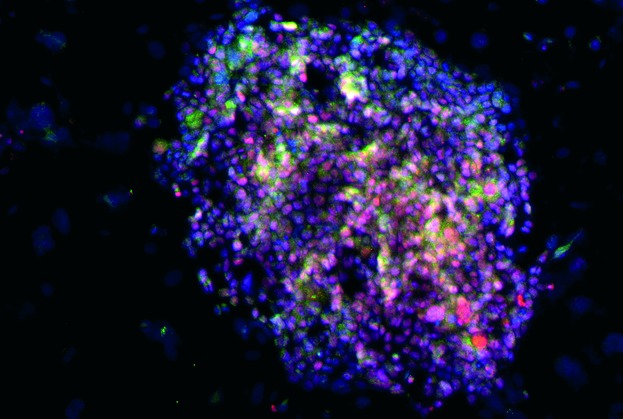
A diverse range of functions has been proposed for mammalian prion protein or PrPC. The current study illustrates that PrPC is involved in regulating cell cycle dynamics, self-renewal and determining the fate of human embryonic stem cells. This work suggests that PrPC is involved in key activities that dictate the status of embryonic stem cells.
Intracellular calcium plays a critical role in the alcohol-mediated death of cerebellar granule neurons
- Pages: 323-335
- First Published: 01 November 2012

Intracellular calcium plays a critical role in the alcohol-mediated death of cerebellar granule neurons Alcohol triggers neuronal death in the developing brain by an unknown mechanism. Since disruption of intracellular calcium [Ca2+]i is linked to cell death, we investigated the role of [Ca2+]i in alcohol-induced cell death. Experiments with neuronal cultures demonstrated that alcohol releases calcium from intracellular stores, producing a sustained [Ca2+]i increase and neuronal death. Preventing this rise in [Ca2+]i ameliorated cell death, suggesting a key role for [Ca2+]i in alcohol neurotoxicity.
Bioenergetics & Metabolism
Development of NMR spectroscopic methods for dynamic detection of acetylcholine synthesis by choline acetyltransferase in hippocampal tissue
- Pages: 336-346
- First Published: 24 September 2012

Detection of acetylcholine synthesis in brain homogenate using NMR spectroscopy.
Current methods available to measure acetylcholine synthesis are based on radiometric assay of choline acetyltransferase activity. Using either direct 13C- or 15N-edited 1H-NMR spectroscopy, we demonstrate the possibility to monitor acetylcholine synthesis from a labeled precursor in rat brain homogenate. Our 1H-NMR method was sensitive enough to follow the dynamics of the reaction over time and to provide estimates of the reaction kinetics parameters. The results of this proof-of-concept biochemical study suggest that this NMR-based method could be used in future in vivo studies to non-invasively assess cholinergic functions.
AGC1-malate aspartate shuttle activity is critical for dopamine handling in the nigrostriatal pathway
- Pages: 347-362
- First Published: 06 December 2012
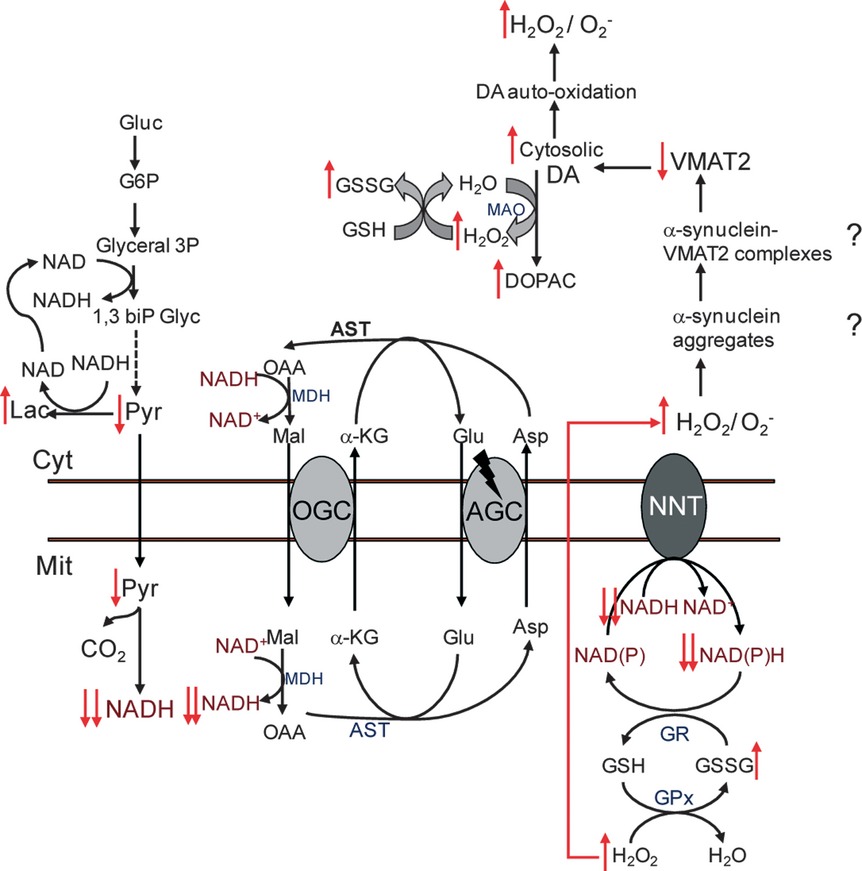
The nigrostriatal dopamine (DA) system constitutes a target of Aralar/AGC-deficiency. A fall in vesicular monoamine transporter-2 (VMAT2) levels and GSH/GSSG ratio associated with increased DA metabolism was observed in Aralar-KO striatum. A failure in the Aralar-Malate aspartate shuttle pathway, resulting in limited mitochondrial NADH formation, and ROS detoxifying capacity might constitute an important factor at the origin of DA degeneration.
Neuronal Plasticity & Behavior
Behavioral and monoamine changes following severe vitamin C deficiency
- Pages: 363-375
- First Published: 26 October 2012
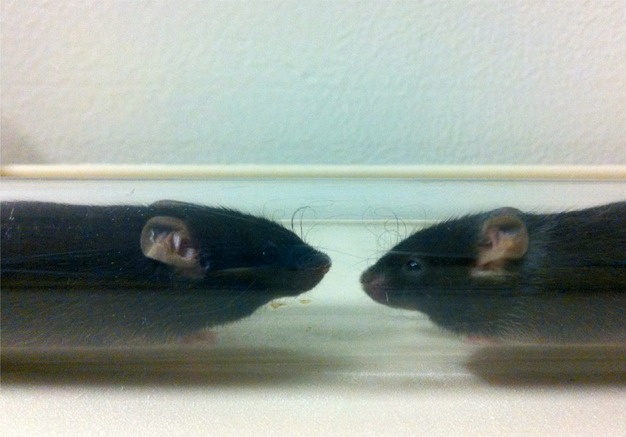
The study was performed to investigate behavioral changes that occur in Gulo−/− mice during severe vitamin C (ascorbic acid) deficiency. Most, but not all, aberrant behaviors in the deficient mice recovered with dietary resuscitation, and during the scorbutic period serotonergic and dopaminergic breakdown into their respective metabolites was decreased indicating a conservation state. These data are relevant given the relatively high proportion of the population with low vitamin C levels and indicate a potential role for vitamin C status in psychological health and response to pharmacological treatments.
Chronic clozapine reduces rat brain arachidonic acid metabolism by reducing plasma arachidonic acid availability
- Pages: 376-387
- First Published: 01 November 2012

The atypical antipsychotic clozapine, like olanzapine, downregulates rat brain arachidonic acid (AA) metabolism (cyclooxygenase activity and PGE2 concentration) by reducing plasma unesterified AA concentration and AA incorporation rate Jin into brain phospholipids. Brain AA incorporation coefficient k* (uptake affinity) is increased. Thus two atypical antipsychotics, like mood stabilizers, may act in bipolar disorder by dampening its upregulated brain AA metabolism.
Betaine attenuates Alzheimer-like pathological changes and memory deficits induced by homocysteine
- Pages: 388-396
- First Published: 15 November 2012
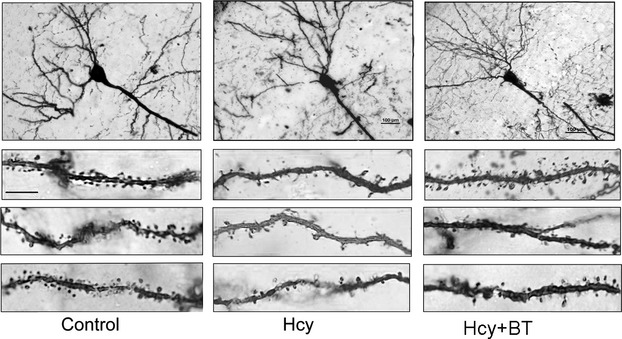
We have found that betaine can attenuate Hcy-induced spatial memory deficits with possible mechanisms that may involve in the expresions or/and activations of several memory-related proteins, and increase the dendritic branches and spine density in hippocampal CA1 region. It also attenuated AD-like tau hyperphosphorylation by activation PP2A, and inhibited Aβ aggregation by decreasing PS-1.
Molecular Basis of Disease
L1CAM and its cell-surface mutants: new mechanisms and effects relevant to the physiology and pathology of neural cells
- Pages: 397-409
- First Published: 13 September 2012
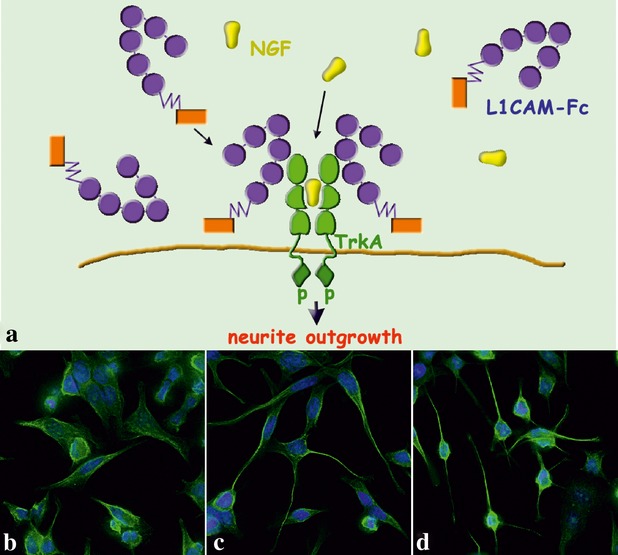
L1CAM is a TrkA coreceptor
The neural adhesion protein L1CAM works also as a coreceptor. The receptors/mechanisms involved and the changes induced by pathogenetic L1CAM mutations were known only in part. L1CAM and some (but not others) of its mutants were identified as coreceptors of TrkA. The article reveals new aspects of TrkA signaling and new mechanisms of the L1 syndrome (CRASH) pathogenesis. (a) The water-soluble chimera, L1CAM-Fc, reproduces the L1CAM-positive modulation of TrkA when incubated with cells that lack the endogenous adhesion protein. (b–d) Neurite outgrowth induced in PC12-Trk cells (b) by L1CAM-Fc alone (c) or associated to a small concentration of NGF (d).
Functional GPR37 trafficking protects against toxicity induced by 6-OHDA, MPP+ or rotenone in a catecholaminergic cell line
- Pages: 410-417
- First Published: 01 November 2012
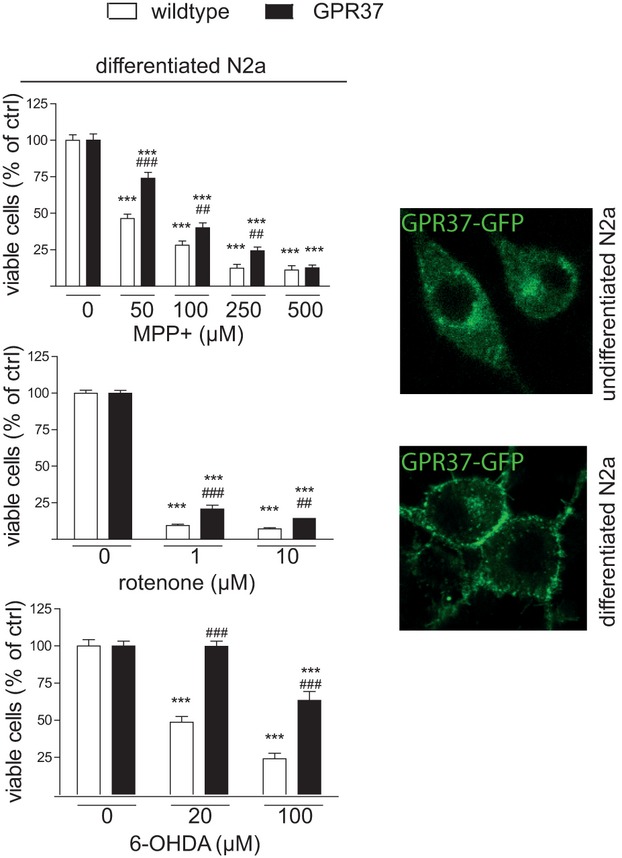
Functional GPR37 trafficking protects against toxicity induced by 6-OHDA, MPP+ or rotenone in a catecholaminergic cell line: GPR37 is an orphan receptor implicated in Parkinson's disease. Previous work has shown that aggregated GPR37 is accumulated in Lewy bodies and promotes cell death. In contrast, this study shows that functionally trafficked GPR37 counteracts cell death induced by three different dopaminergic toxins. Moreover, catecholaminergic neuronal differentiation leads to increased receptor levels at the plasma membrane and enhanced receptor-mediated protection.
Dysregulation of REST-regulated coding and non-coding RNAs in a cellular model of Huntington's disease
- Pages: 418-430
- First Published: 12 November 2012

In Huntington's disease (HD), disruption to interactions between numerous transcriptional regulators and Huntingtin protein leads to widespread changes in gene expression. We assessed the relative contribution to the HD transcriptome of altered activity of one such regulator - Repressor Element-1 Silencing Transcription Factor (REST). We identified aberrant REST repression of specific targets, many of which were rescued by ablating REST function, including proteins important for neuronal development, survival and function. REST may therefore be a therapeutic target in HD.




